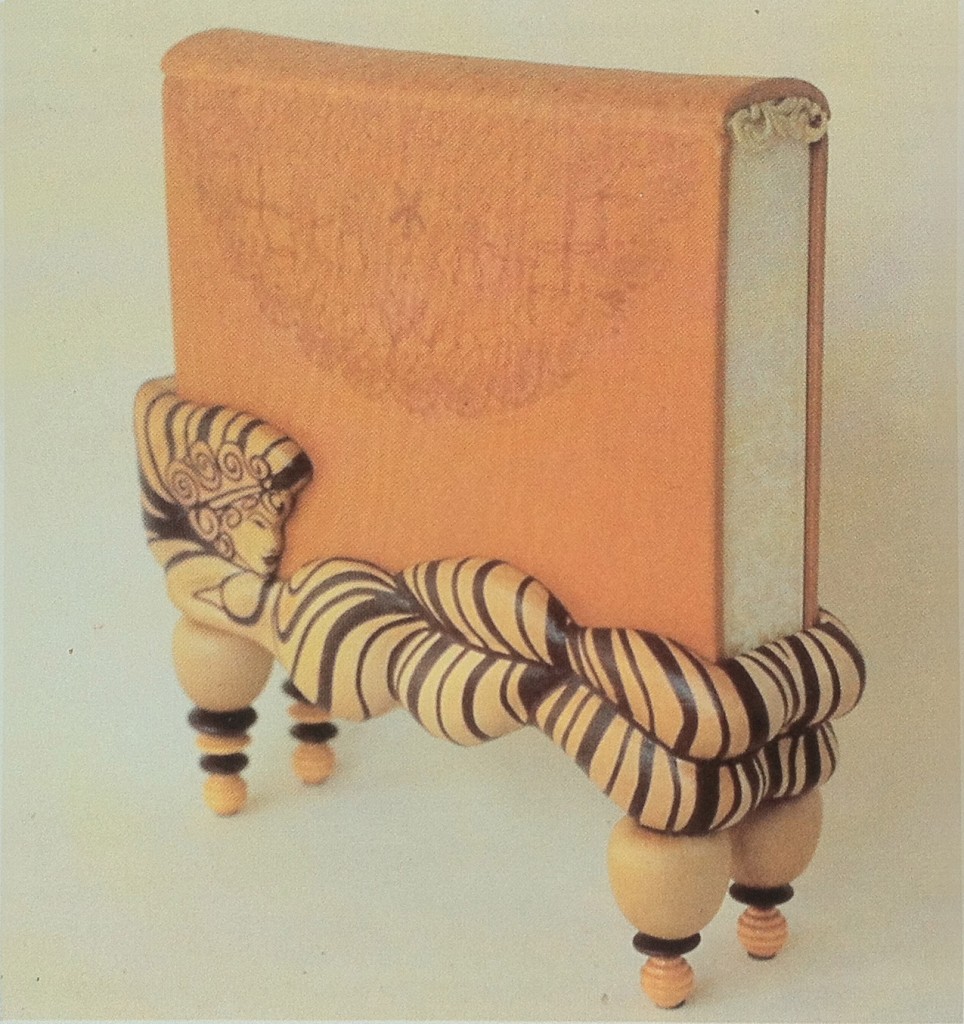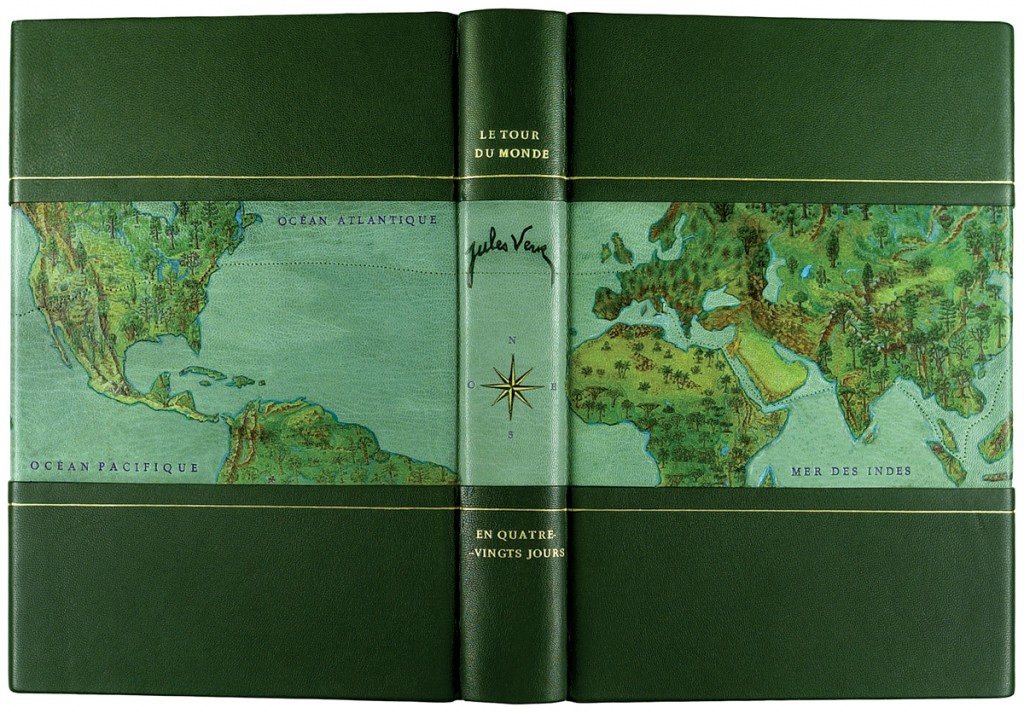 In the spirit of Christmas, I offer this binding by Jan Sobota that appears like box within a box. In 1986, Sobota completed this layered book object of Frantisek Rachlik’s Komedie plna lasky (Comedy Full of Love), a story about the life of Jindrich Mosna, a famous Czech actor during the nineteenth century. Each layer of the book object represents three different costumes from his most important roles.
In the spirit of Christmas, I offer this binding by Jan Sobota that appears like box within a box. In 1986, Sobota completed this layered book object of Frantisek Rachlik’s Komedie plna lasky (Comedy Full of Love), a story about the life of Jindrich Mosna, a famous Czech actor during the nineteenth century. Each layer of the book object represents three different costumes from his most important roles.
The book object lives inside a box sculpted out of board to mimic a newspaper reporter’s jacket. It is covered in natural sheepskin and includes buttons and a pocket with document, with details outlined in blind tooling. The second layer of protection is a slipcase modeled after a soldier’s uniform. Also sculpted out of board, the slipcase is covered in blue calfskin with onlays of various colors embellishing the jacket. Blind tooling is also used to finish off the details.
 Finally, the boards of this box-binding are sculpted with board to represent the costume of a Czech peasant, covered in white goatskin and natural cowhide. Relief onlays, gold and blind tooling complete the design.
Finally, the boards of this box-binding are sculpted with board to represent the costume of a Czech peasant, covered in white goatskin and natural cowhide. Relief onlays, gold and blind tooling complete the design.


















